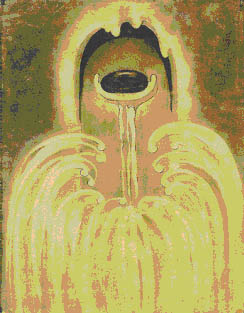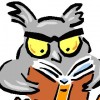Georgia O'Keeffe: The Secrets of Her Success Part 2

I. Background
In order to better understand Georgia O’Keeffe as an artist, it is important to first examine her background. She was born Georgia Totto O’Keeffe on November 15, 1887 in Sun Prairie, Wisconsin to Francis and Ida O’Keeffe. She was the second of seven children. She was named after her grandfather, George Totto (Sills 6).
O’Keeffe was well educated. She and her sisters began taking art lessons at home as children (Education) and by the age of sixteen she had a total of five years worth of lessons (“Young”). She attended several different schools before graduating from the Chatham Episcopal Institute in Williamsburg, Virginia in 1905 (Women). While she was at Chatham she destroyed her student drawings and stated “I don’t want any of those pictures floating around to haunt me in my later years” (Pollitzer 76). Despite what she said, her artistic talent was already being recognized. She received an art prize for a watercolor of red and yellow corn that hung proudly on the wall of the school for many years (Sills 9). She was described as “outwardly demure, but a rebel by nature, Georgia had a way of ignoring the fact that rules existed” (76). Indeed, she came close to not graduating due to the number of demerits she had received as well as her spelling grades. It took her six attempts before she finally passed her spelling exam (Gherman 35).
After high school, O’Keeffe spent the 1905 to 1906 academic year at the Art Institute of Chicago (Luke 71). It was here that she was first confronted with anatomy drawing classes. Initially, the class practiced drawing from plaster casts, but they eventually used live models as well. O’Keeffe would always remember how sad her first male model looked and how much it upset her (Pollitzer 84). Perhaps this impacted her decision to rarely use human subjects in the future. During the summer break O’Keeffe returned to her family’s home in Virginia where she caught typhoid fever, and was unable to return to school that fall (Turner 99). The following year, in September of 1907, O’Keeffe enrolled in the Art Students League in New York (Luke 71). It was here that the other students nicknamed her Patsy “to go with her Irish family name” (Gherman 44). This was also the year that she met Anita Pollitzer, a fellow student, who became her close friend (Pollitzer 1). Once again, her talent was recognized when she won the Student League’s William Merritt Chase award for her painting Untitled (Dead Rabbit with Copper Pot ). The prize was one hundred dollars and a scholarship to attend summer school (Hoffman 3). Unfortunately, due to her parent’s financial difficulties she was unable to return to the school the following year.
In the fall of 1908, O’Keeffe began working as a commercial artist at an advertising company in Chicago. She was paid to draw lace and embroidery for newspaper advertisements (Luke 71). She worked there for two years before she caught the measles. As a result of the illness her eyesight was temporarily weakened and she was forced to quit (Turner 99). She returned to her parents home, now in Charlottesville, Virginia. While she was home, her old principal and art instructor at Chatham, Elizabeth Willis, asked her to substitute teach for her during the spring of 1911 (99).
During the summer of 1912, O’Keeffe enrolled in an art teacher course that greatly affected her view of art. She had become discouraged. Up until this point, all of her art instructors had taught her to paint things exactly as they are. She stated that “. . . it seemed so stupid! If one could only reproduce nature, and always with less beauty than the original, why paint at all?” (Fine 40). The course was taught by Alon Bement at the University of Virginia, Charlottesville. He taught the ideas of Arthur Dow, that the “goal of art was an expression of the artist’s personal ideas and feelings . . . through harmonious arrangements of line, color and notan (Japanese system of lights and dark)” (“About”). O’Keeffe and Bement became friends and for the next four summers she worked as his assistant at the University of Virginia (Luke 71).
O’Keeffe began teaching art in 1914. Her first position was in Amarillo, Texas (“About”) as the supervisor of art (Luke 71). She used unconventional teaching methods. For example, one day a boy rode a pony to school. Without considering what the school board would think, she “hoisted the pony up onto the teacher’s big flat desk, so the student’s could see it and draw it” (Pollitzer 106). On another occasion, O’Keeffe fought the school board over the art books. She was required to teach from them in a certain order, but “Georgia considered such teaching rigid and dead” (107). She wrote her friend Anita Pollitzer that “I could not let those children, some of them so poor that their toes were sticking out of their shoes, be forced to pay seventy-five cents or a dollar for a drawing book, when fine things . . . were growing at their very doors . . .” (107). O’Keeffe eventually won and was no longer required to teach from the textbooks.
After two years, she resigned her position and moved to Columbia, South Carolina where she taught at the Columbia College for one year (“About”). Once again, she had difficulty following the rules. She met a male student that was around her age named Ted Reid. She didn’t realize that it was against the rules for the teachers to date the students. As Anita stated, “that such a ruling existed had never dawned on her, nor would she have thought it important” (Pollitzer 152). The authorities spoke to him and he stopped seeing her, but he didn’t speak to her about it because he was close to graduation and was “afraid of the result of her outburst to the college authorities” (153). Apparently, he had no doubt that she would have confronted the authorities and voiced her opinion about their rules.
It was during the fall of 1915 while O’Keeffe was teaching in South Carolina that she began an experimental phase in her art. On October 26, she wrote the following to Anita:
What is art anyway? When I think of how helplessly unable I am to answer that question I cannot help feeling like a farce -- pretending to teach anybody anything about it -- I won’t be able to keep at it long . . . or I’ll lose what little self respect I have -- unless I can in some way solve the problem . . . I am really quite enjoying the muddle -- and am wondering it I’ll ever get anything out of it . . . I decided I wasn’t going to cater to what anyone else might like -- why should I? (Pollitzer 33)
She had come to the conclusion that in order to continue to pursue her goal of becoming an artist, she would have to put away everything that she had done so far and start over (Fine 58). She began by using only charcoal and paper, without the use of color because she felt that it would be distracting (Lisle 66). Her purpose was to try to express what she was feeling through her drawings and to do so she tried a variety of different methods. In a letter to Anita in December, she wrote that she set the paper on the floor and crawled around while she was drawing. She went on to say that she even tried to express her art through the use of music, “. . . I’ve labored on the violin . . . you never in your wildest dreams imagined anything worse than the noises I get out of it . . .” (Pollitzer 39). This experimental period was later called the “most significant formation period in her life” (Gadt 178), and her charcoal drawings were “recognized as being among the most innovative in all of American art of the period” (“About”).
At the end of the academic year, she returned to New York to attend a course taught by Arthur Dow at the Columbia Teacher’s College (“Young”). As mentioned previously, Dow was among the most influential art instructors of the time. It was later stated that O’Keeffe was “. . . well trained; the best men in the best male-dominated institutions taught her well, if sometimes condescendingly” (Crunden 278).
In fall of 1916, Georgia returned to Texas. She was hired as the head of the art department at the West Texas Normal College in Canyon, Texas (Luke 71). Late that December she mailed several of her charcoal drawings to Anita in New York City. On January 1, 1916 Anita walked the short distance to Alfred Stieglitz’s “291” gallery. After viewing the drawings, he exclaimed, “Finally, a woman on paper!” (Crunden 274). From that point on he worked to promote Georgia O’Keeffe as an artist and to make her artistic dreams a reality.
(Coming soon Georgia O'Keeffe: The Secrets of Her Success-- Part 3: A Unique Character)
A complete list of research sources will be provided in the final chapter of this series.








